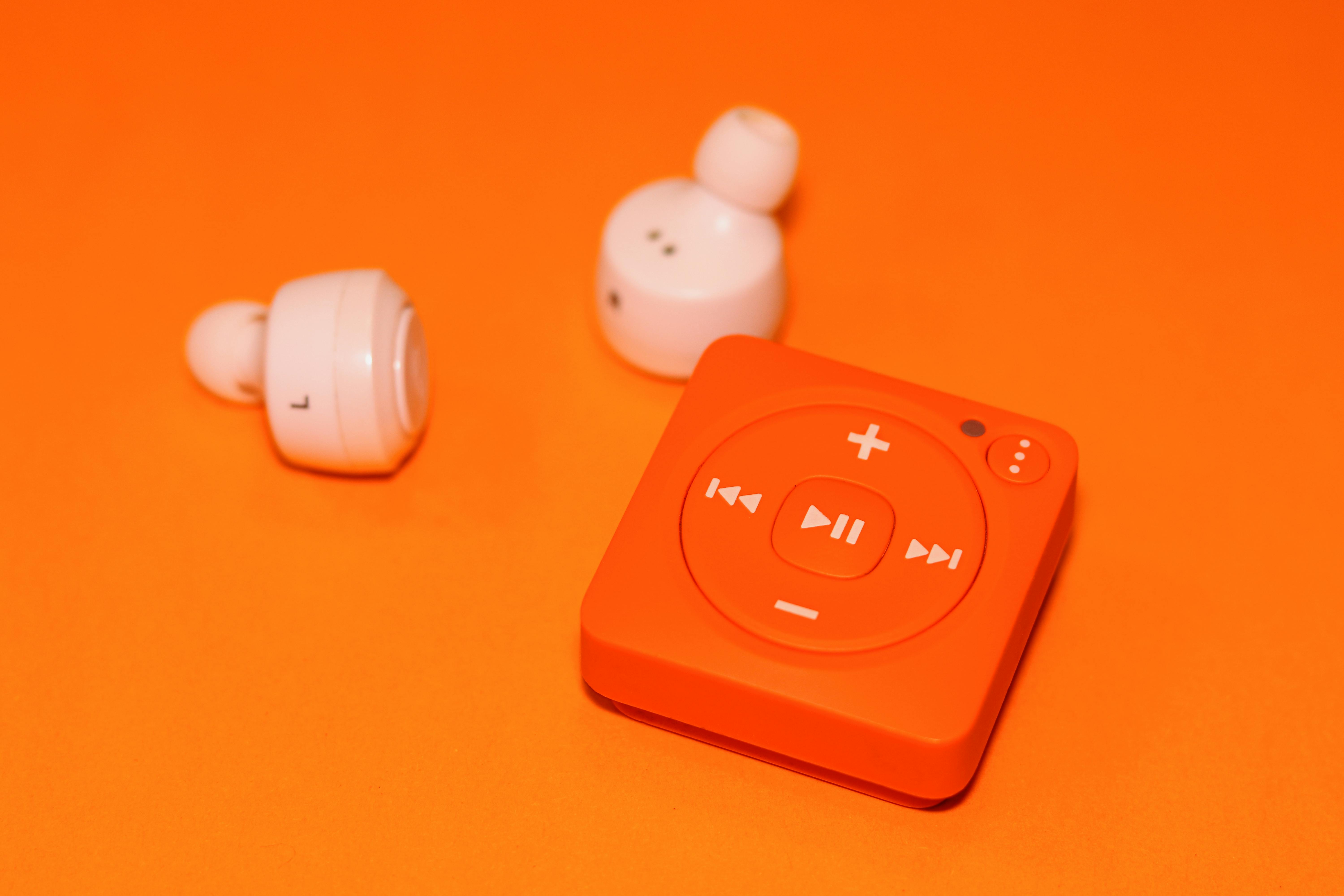You ever wondered how to take your favourite YouTube videos and, I don’t know, actually keep them as files on your computer? Yeah, sounds simple but turns out, YouTube and converter tools aren’t as straightforward as you’d think. In fact, how to easily transform videos into files is one of those topics that’s surprisingly under-discussed. Why is no one talking about the best ways to do this without a headache or sketchy software? Maybe it’s just me, but I always assumed there’d be some magic button on YouTube for downloading, yet here we are, hunting for the right YouTube converter that actually works.
So, what’s the deal with all these video converters for YouTube? Are they safe? Are they quick? And more importantly, why do some of them turn your perfectly good video into a pixelated mess? Not gonna lie, this surprised me too — it’s like you need a secret handshake to find a decent, reliable YouTube to MP4 converter. If you’re anything like me, you probably want a method that’s fuss-free, no annoying ads, and doesn’t require you to sign up for a million things. You’d think this would be obvious, right? But no, the internet is full of options that promise the moon and deliver… well, something less impressive.
So buckle up, because we’re diving into the world of YouTube and converter tools — uncovering the easiest, most effective ways to grab those videos and save them as files without losing your mind. Whether you want to keep a funny clip, save a tutorial, or just have offline access to your favourite content, this guide’s got your back. Let’s figure out the best hacks and tools to make your video downloading life a whole lot simpler.
Top 7 YouTube Converters in 2024: How to Download Videos Effortlessly
YouTube and converter, huh? Sounds like one of those things that’s been around forever but somehow still feels like witchcraft when you actually try to do it properly. Like, you wanna save a video for later because WiFi’s rubbish or you just want that one funny clip for your mates, but then you get tangled in a web of ads, dodgy sites, and confusing tech jargon. So, here’s the lowdown on the top 7 YouTube converters in 2024 — how to download videos effortlessly without losing your mind or accidentally clicking on a virus. Yeah, I know, “effortlessly” is a big promise, but let’s see if we can get close.
Why This Still Matters (Even Though YouTube Probably Hates It)
Honestly, I don’t get why YouTube and converters still cause such a fuss. You’d think in 2024, with all the streaming and cloud stuff, we’d just have a “Download” button everywhere. But nope, apparently, there’s some legal mumbo jumbo about copyright and whatnot. So, people still wanna grab videos offline, especially for stuff like tutorials, music vids, or that one documentary no one can find anywhere else.
And if you’re like me — always on the go, sometimes stuck in places with dodgy internet — having a converter tool is a lifesaver. But, seriously, who even came up with the first YouTube converter? Must have been some genius or just a bored programmer with too much time on their hands.
Top 7 YouTube Converters in 2024
I tried a bunch of these so you don’t have to spend hours scrolling through sketchy websites. Some are free, some have paid versions (but you can ignore those if you want, I guess). Here’s my quick rundown:
4K Video Downloader
- Pros: Easy UI, supports 4K videos, downloads playlists
- Cons: Limits on free downloads, pop-ups sometimes
- Fun fact: They actually update regularly, unlike some other tools that feel abandoned since 2015.
YTMP3.cc
- Pros: Super simple, no installs needed
- Cons: Annoying ads everywhere, limited to MP3 and MP4
- Not really sure why this matters, but it’s been around forever and still works.
ClipGrab
- Pros: Clean interface, converts to multiple formats
- Cons: Slower downloads, occasional glitches
- Random thought: It always reminds me of those old-school apps you’d find on a scratched CD in the 2000s.
Any Video Converter
- Pros: Supports lots of formats, batch downloads
- Cons: Software bundle offers during install (watch out!)
- Maybe it’s just me, but I find the interface a bit clunky.
OnlineVideoConverter.pro
- Pros: No registration, works on mobile too
- Cons: Some unreliable conversions, ads galore
- Yeah, don’t expect miracles but it’s decent for quick stuff.
Freemake Video Converter
- Pros: Easy drag and drop, good format options
- Cons: Watermark on free version, slow conversion speed
- Seriously, why watermark free tools? Like, come on.
SaveFrom.net
- Pros: Browser extension available, quick downloads
- Cons: Risky due to browser security warnings, pop-ups
- Heads up: I’d be cautious with extensions — they tend to be a bit dodgy.
How To Easily Transform Videos Into Files (Step-by-Step-ish)
Alright, so you’ve picked your converter — let’s say 4K Video Downloader because why not? Here’s a rough guide:
- Find the YouTube video you wanna save. Copy the URL (the link in the address bar, duh).
- Open your converter app or website. Paste the URL into the designated box.
- Choose your format — MP4 is standard for video, MP3 if you just want audio.
- Hit “Download” or whatever the button is called. Wait. Maybe go make a cuppa because some of these take ages.
- Once done, find your file in the downloads folder or wherever you set it to save.
- Play it, share it, or shove it on your phone for offline binge-watching.
Simple? Kind of. Sometimes tech doesn’t want to co-operate, especially if YouTube changes stuff on their end.
Quick Comparison Table (Because I Like Tables)
| Converter Name | Free Version | Formats Supported | Ads/Pop-ups | Ease of Use | Safety (ish) |
|---|---|---|---|---|---|
Step-by-Step Guide: How to Convert YouTube Videos into MP4 Files Quickly
Alright, so you wanna convert YouTube videos into MP4 files quickly, huh? Honestly, who hasn’t been there? You’re chilling, watching some random tutorial or a weird cat compilation, and then bam—you need that video offline for reasons you can’t even fully explain. Maybe it’s just me, but I always thought YouTube would let us download everything easily, no? Nope. So here’s a kinda messy but hopefully helpful step-by-step guide on how to do it without losing your mind. Also, I’ll toss in some bits about “YouTube and converter: how to easily transform videos into files” because, well, that’s the obvious next question, isn’t it?
Why Bother Converting YouTube Videos Into MP4?
Honestly, you might ask, “Why bother at all?” I mean, YouTube’s got its own download feature sometimes, but it’s limited, and you can’t always access it depending on where you live or what video you want. Plus, having an MP4 means you can watch the video offline, use it for presentations, or just keep it because you’re a hoarder like me.
Here’s a quick rundown of why converting is still a thing:
- Offline viewing (planes, trains, or dodgy WiFi)
- Editing or remixing content (legal stuff aside, but y’know)
- Archiving favourite videos (because they might vanish one day)
- Sharing with mates who don’t have internet (yeah, still a thing)
- Saving data on mobile plans (streaming eats your allowance)
Not really sure why this matters, but the MP4 format’s the most popular because it’s compatible with almost every device—phones, laptops, smart TVs, you name it.
What’s a YouTube Converter Anyway?
If you’ve never used one, a “YouTube converter” is basically a tool (online or software) that takes the video link from YouTube and turns it into a downloadable file, often MP4. Sounds simple, but oh boy, the internet is flooded with sketchy sites promising fast downloads and then bombarding you with ads or viruses. Seriously, who even came up with this?
Some converters also let you pick different qualities (like 720p, 1080p, or even 4K if you’re fancy), or extract just the audio (MP3) if you’re not bothered with the visuals. Handy if you just want that podcast or song, but that’s a different kettle of fish.
Step-by-Step Guide: How to Convert YouTube Videos into MP4 Files Quickly
Okay, let’s get down to brass tacks. Here’s a rough step-by-step for the absolute basics, assuming you’re using an online converter (because who installs software these days, right?):
Find the YouTube video you want
- Open YouTube, search or navigate to the video. Copy the URL from the address bar.
Choose a reliable converter website
- Examples: y2mate, SaveFrom.net, or ClipConverter.cc. (Warning: some sites are dodgy, so maybe use an antivirus just in case.)
Paste the URL into the converter’s input box
- Usually, there’s a big box that says “Paste link here” or something similar.
Select MP4 as your format
- Some sites auto-select MP4, but double-check because you don’t want some weird file extension.
Pick your preferred quality
- Higher quality = bigger file size. Choose what suits your needs.
Click the download button
- Wait a few seconds while the site processes the video. Then click the final download link.
Save the file to your device
- Choose a folder you’ll remember because, honestly, downloads default to weird places sometimes.
Voila! You should have the MP4 file ready to go.
Quick Table: Pros and Cons of Online Converters vs Software
| Method | Pros | Cons |
|---|---|---|
| Online Converters | No installation, quick access | Ads, potential malware, limited features |
| Desktop Software | More features, safer, batch downloads | Takes space, might be complicated for newbies |
A Quick Side Note: Legal Stuff
Look, I’m not your lawyer, but downloading videos without permission can be a grey area. YouTube’s terms usually prohibit downloading unless there’s a download button or explicit permission. So, if you’re using this for personal offline viewing, that’s one thing. But redistributing or using it commercially? Probably not the smartest plan. Just saying.
Sorry, had to grab a coffee — anyway… Back to it!
YouTube And Converter: How To Easily Transform Videos Into Files (The Lazy Person’s Version
Why Choose a YouTube Converter? Benefits of Transforming Videos into Audio and Video Files
Alright, so here we go. You’ve probably been scrolling through YouTube, found some mad video you wanna keep — maybe it’s a sick guitar solo, a podcast episode, or just some weird cat compilation you wanna save for later when the Wi-Fi’s garbage. But then, you realise, “How on earth do I keep this without it vanishing into the internet ether?” Enter the magical realm of the YouTube converter. Sounds fancy, right? But seriously, why choose a YouTube converter? And what’s all this fuss about transforming videos into audio and video files? Let’s dive in, or at least attempt to, without falling asleep on the keyboard.
Why Choose a YouTube Converter? (And Why It’s Not Just For Lazy People)
First thing’s first: a YouTube converter isn’t some dark art or illegal hack (well, depends how you use it, but shhh). It’s just a tool that helps you grab content from YouTube and turn it into files you can save on your device. That means no buffering when your internet decides to take a holiday, no ads interrupting your vibe, and zero dependence on YouTube’s servers being up. Simple, right?
But more than that, these converters let you snag stuff in different formats. You want just the audio because you’re going for a jog and don’t wanna waste data on video? Done. Prefer the full video to watch offline during your next flight or subway trip? Easy peasy. And honestly, sometimes it’s just quicker than trying to find the official download button that YouTube doesn’t really offer for most content.
YouTube and Converter: How To Easily Transform Videos Into Files
Okay, so here’s the basic rundown on how this all works because, I dunno, maybe you’re not super tech-savvy or maybe you’re just a bit clueless like me at 2 am writing this. Basically, you:
- Find the YouTube video URL you want to convert.
- Pop it into a YouTube converter site or app. (There’s loads out there, some sketchier than others, so maybe don’t click on the first dodgy link you see.)
- Choose the format you want — MP3 for audio, MP4 for video, or other fancy formats if you’re into that kind of techy stuff.
- Hit convert, wait a few seconds or minutes depending on your internet speed and the video size.
- Download the file and boom, it’s yours to keep.
It’s mad simple, which is probably why it’s so popular. But, heads up — some converters are packed with ads or try to sneak in malware, so don’t be an idiot and make sure you have some decent antivirus or use trusted converters (like YTMP3, 4K Video Downloader, or similar, not that I’m endorsing anything).
Benefits of Transforming Videos into Audio and Video Files
Alright, this bit is kinda obvious but worth listing because sometimes you gotta see it spelled out:
- Offline access: No Wi-Fi? No problem. You can listen or watch without stressing about signal.
- Data saving: Audio files are way smaller than video, so if you’re on a limited plan, just convert to MP3 and save your megabytes.
- Portability: Pop those files onto your phone, MP3 player, or even your mate’s dodgy old iPod. Works anywhere.
- Flexibility: Want to edit clips or mash up some music? Having the file means you can mess about with it in editing software.
- Avoid ads: Skip those annoying pre-roll ads and mid-video interruptions. YouTube’s ad system is… let’s say, not user-friendly.
And honestly, sometimes you just wanna keep that one weird video forever because, who knows, it might be your guilty pleasure or your secret weapon in a pub quiz.
A Quick Table: Audio vs Video Files From YouTube
| Feature | Audio (MP3, WAV, etc.) | Video (MP4, AVI, etc.) |
|---|---|---|
| File Size | Smaller, easier to store | Larger, needs more storage |
| Use Cases | Music, podcasts, audiobooks | Tutorials, vlogs, movies, visual content |
| Data Usage | Low | High |
| Device Compatibility | Almost universal | Most devices, but needs video player |
| Editing Possibilities | Audio editing, mixing | Video editing, cutting, effects |
Sorry, had to grab a coffee — anyway…
You might be wondering if this is all legal or if you’re gonna get in trouble. Honestly, it’s a grey area. YouTube’s terms say you shouldn’t download content unless they let you, but for personal use? Loads of
The Ultimate List of Free YouTube to MP3 Converters: Which One Works Best?
Alright, so you’ve probably been down the rabbit hole of trying to convert YouTube videos into MP3 files at some point, right? I mean, who hasn’t? Whether it’s for that one podcast episode you swear you’ll listen to offline someday or that ridiculous 10-hour loop of a cat meowing (don’t judge), free YouTube to MP3 converters seem like the holy grail. But honestly, which one actually works best without making you want to smash your laptop? Buckle up, because here’s the ultimate list of free YouTube to MP3 converters, plus some rambling on the whole YouTube and converter situation.
Why This Still Matters (Probably)
Look, YouTube’s been around since 2005 — yeah, it’s ancient internet history now — and people have been wanting to grab audio off videos since about five minutes after it launched. YouTube itself doesn’t make it easy to download content (understandably, copyright and all that jazz), so third-party converters have filled that gap. Not really sure why this matters so much in 2024 when streaming is king and everyone’s got Spotify or Apple Music, but hey, some folks still prefer having files on their devices. Maybe it’s just me, but there’s something oddly satisfying about owning a local copy of that indie band’s live session or that weird YouTube tutorial you’ll never watch again.
Anyway, what was I saying again? Oh yeah—YouTube and converter tools.
YouTube And Converter: How To Easily Transform Videos Into Files (Sort Of)
The basic idea is simple: paste the YouTube link, hit convert, and download the MP3. But the devil’s in the details with these things. Some sites are riddled with ads, others try to sneak in malware (classic), and a few just downright don’t work or butcher the audio quality. Here’s a quick breakdown of what you should expect:
- Input: Usually just a URL from YouTube.
- Conversion: The tool extracts the audio track from the video.
- Output: MP3 file ready to download.
- Extras: Some converters let you choose bitrate, file format, or even trim the audio.
Sounds easy, right? Yeah, except sometimes it takes five tries and a browser crash.
The Ultimate List of Free YouTube to MP3 Converters: Which One Works Best?
Alright, after testing wayyyy too many options and getting side-tracked by memes, here’s the rundown of free converters that still stand tall in 2024. Spoiler: none are perfect, but some are less rubbish than others.
| Converter Name | Pros | Cons | Notes |
|---|---|---|---|
| YTMP3.cc | Simple interface, quick | Annoying pop-ups, limited length | Good for quick jobs |
| 4K YouTube to MP3 | Desktop app, no ads | Requires download, takes space | Best audio quality |
| FLVTO.biz | Converts multiple formats | Loads of ads, sometimes slow | Works on mobile too |
| MP3Download.to | No registration needed | Lower bitrate options | Basic but reliable |
| ClipGrab | Open source, multi-format | Desktop software, setup needed | Great for batch downloads |
Now, I’m not saying you should just blindly trust these — some have shady terms or sketchy ads. Seriously, who even came up with this whole ad-fest business? It’s like, just let me convert my file in peace.
Step-by-Step: How To Convert YouTube Video To MP3 Using These Tools
Here’s a quick how-to with the classic YTMP3.cc (because simplicity wins):
- Find the YouTube video you want.
- Copy the URL from the address bar.
- Go to YTMP3.cc (or your chosen converter).
- Paste the link into the box.
- Select MP3 as the output format.
- Hit Convert and wait for it to do its magic.
- Click Download when ready.
- Save the file somewhere you won’t lose it (unlike me).
Easy? Sort of. Just watch out for those dodgy ads pretending to be download buttons. If you click those, you might end up with something you definitely didn’t want.
Quick Comparison: Desktop Apps vs Online Converters
Desktop apps (like 4K YouTube to MP3 or ClipGrab):
- More stable, usually better quality.
- No annoying ads every two seconds.
- Need to install, which some folks hate.
- Can handle batch downloads — hooray!
Online converters:
- No installation needed, just open a webpage.
- Sometimes dodgy, with pop-ups and ads galore
How to Legally Download and Convert YouTube Videos for Offline Viewing
Alright, so you’re wondering how to legally download and convert YouTube videos for offline viewing? Yeah, same here sometimes — you find a cracking video and then boom, no internet on the tube or in some dodgy café and you’re left staring at a blank screen. Not great. But here’s the kicker: YouTube’s own policies make it pretty clear downloading videos isn’t exactly kosher unless you’re using their own tools. So, how do you get around this without turning into a pirate or getting a cease-and-desist letter in your inbox? Let’s dive in, shall we?
Why This Still Matters (Even If You’re Not A Tech Wizard)
YouTube is massive, right? Billions of videos, and people watch tons of content every day. But, the platform is designed for streaming, not downloading. Which, you know, makes sense for them to keep control and all that jazz. Still, offline viewing is a legit need — like when you’re on a flight, or your mobile data’s about as useful as a chocolate teapot.
Here’s the thing: YouTube itself offers some offline options, but they’re only in certain countries and usually behind a paywall (like YouTube Premium). So if you’re not into paying just to watch videos offline, you might start hunting for other ways. And that’s where the whole “YouTube and converter” stuff comes in.
YouTube And Converter: How To Easily Transform Videos Into Files
Right, so converters. These are tools (software, websites, apps) that let you grab a YouTube video link and convert that video into a file format on your device — MP4, MP3, you name it. Sounds neat, but, uh, here’s where it gets murky. Because, legally speaking, most of these converters are in a grey area at best. YouTube’s terms say you shouldn’t download videos unless there’s a button on the site/app that says you can. So, is it legal? Depends on where you live and what you do with the file.
But, assuming you want to keep things above board, here’s what you can do without getting into trouble:
- Use YouTube Premium: It’s the easiest and safest method. Pay a monthly fee, download videos officially, and watch offline on your devices. No drama.
- Look for Creative Commons videos: Some content creators upload videos with licenses that allow downloading and reuse — check the video’s description or filter searches accordingly.
- Use official apps: Some third-party apps partner with YouTube and have legit offline features — but watch out for scams or malware.
Quick Table: Comparing Download Options
| Method | Legality | Cost | Convenience | Quality |
|---|---|---|---|---|
| YouTube Premium | Totally legal | Around £11/month | Super easy | High |
| Creative Commons vids | Legal if allowed | Free | Moderate | Varies |
| Third-party converters | Usually illegal | Mostly free | Easy but risky | Can be variable |
| Screen recording | Legal grey zone | Free | Tedious | Depends on device |
Honestly, I don’t recommend the sketchy converters — you might get malware, or worse, a slap on the wrist. Seriously, who even came up with this whole “downloading videos is illegal” thing? I mean, content creators deserve their due, but sometimes it feels like we’re caught in a legal spaghetti.
Step-By-Step: How To Use YouTube Premium For Offline Viewing
- Sign up for YouTube Premium (there’s usually a free trial, so no harm trying).
- Open the YouTube app on your phone or tablet.
- Find the video you want to watch offline.
- Hit the “Download” button under the video.
- Wait for it to finish downloading (shouldn’t take long on Wi-Fi).
- Watch anytime without internet — magical, right?
You get all the perks: no ads, background play, and official support. Plus, you’re not risking anything dodgy.
Just A Quick Break Because My Coffee Was Cold ☕️
Sorry, had to grab a coffee — anyway, back to the madness of converters. If you really want to use one (maybe you’re stubborn, like me), here’s some basics on how they usually work:
- Copy the YouTube video URL.
- Paste it into the converter’s input box.
- Choose the format you want (MP4 for video, MP3 for audio).
- Hit convert/download.
- Wait for your file to show up, then save it.
But be careful. Loads of these sites are riddled with pop-ups, ads, or worse. And some might be phishing traps. So, if you’re gonna go down
Best YouTube Video Converter Tools for Beginners: Easy and Reliable Options
Okay, so here we are, talking about the best YouTube video converter tools for beginners. Honestly, who even thought we’d need a whole article on this? Like, isn’t YouTube just for streaming stuff? But nope, apparently, loads of people want to download videos, turn them into files, and all that jazz. Maybe it’s just me, but I always figured you’d just watch online and call it a day. Yet, here we are, deep-diving into the weird world of “YouTube and converter” combos. So, grab a cuppa and let’s unravel this mess, shall we?
Why This Still Matters (Or Does It?)
First off, YouTube’s been around since 2005, and it’s basically the kingpin of online video. But it never really offered a straightforward way to save videos offline—at least, not without YouTube Premium or some dodgy third-party apps. So, the rise of YouTube video converters kinda filled that gap. People want to grab videos for offline watching, editing, or just because WiFi sucks in the middle of nowhere (looking at you, London Tube).
But, just a quick heads-up: downloading videos from YouTube is a grey area legally. YouTube’s terms say you shouldn’t do it unless you have permission. I’m not your lawyer, so don’t come crying to me if you get in trouble. Cool?
YouTube And Converter: How To Easily Transform Videos Into Files
Right, so the basic idea is simple: you find a video URL, pop it into a converter tool, choose your format (MP4, MP3, whatever floats your boat), and hit convert. Then, bam, you get a file on your computer or phone. Easy peasy, right? Well, not always.
Some tools are a nightmare with ads and pop-ups, others mess up the quality or only let you download short clips unless you pay up. Seriously, who even came up with this freemium nonsense? Anyway, here’s a rough guide to what you should look for:
- User-friendliness: If you’re a beginner, you don’t want to be swamped with confusing options.
- Format options: MP4 is king for videos, MP3 if you just want audio.
- Speed: Nobody wants to wait ages for a file to download.
- Safety: No malware, please. That’s a dealbreaker.
- Quality: It should keep the video looking decent.
Best YouTube Video Converter Tools for Beginners: Easy and Reliable Options
So, after wasting way too much time testing stuff, here’s a list of what I reckon are the best tools that won’t make you want to throw your laptop out the window.
4K Video Downloader
- Pros: Simple interface, supports multiple formats, can download playlists.
- Cons: Free version limits downloads; interface looks a bit dated.
- Weirdly reliable, and you don’t have to be a tech wizard to use it.
Y2Mate
- Pros: Web-based, no installation, quick conversions.
- Cons: Pop-up ads galore, sometimes sketchy links (use adblock).
- Good if you want something fast and dirty, but don’t expect perfection.
Freemake Video Converter
- Pros: Supports lots of formats, easy drag-and-drop.
- Cons: Free version adds watermark, Windows only.
- Not bad for beginners but you might wanna upgrade to avoid watermarks.
ClipGrab
- Pros: Free, simple, works on Mac, Windows, Linux.
- Cons: Occasionally slow downloads, limited format options.
- A decent pick if you hate the idea of paying or dealing with ads.
OnlineVideoConverter
- Pros: No registration, supports many formats, fast.
- Cons: Sometimes unreliable, ads annoy the heck out of you.
- Honestly, it’s hit or miss, but if you’re in a rush, it’s worth a shot.
Quick Table Comparison (Because Why Not)
| Tool | User-Friendliness | Formats Supported | Ads/Pop-ups | Free Version Limitations |
|---|---|---|---|---|
| 4K Video Downloader | High | MP4, MP3, etc. | Minimal | Limited downloads |
| Y2Mate | Medium | MP4, MP3, etc. | High | None, but annoying ads |
| Freemake | High | Many | Low | Watermark on free version |
| ClipGrab | High | Few | Low | None |
| OnlineVideoConverter | Medium |
How to Convert YouTube Videos on Mobile Devices: Apps and Tips You Need
Alright, so you’re sitting there, probably scrolling through YouTube on your phone, and suddenly think: “How the heck do I convert these videos into files without turning my phone into a brick?” Yeah, me too. It’s 2024, and apparently, we still don’t have YouTube just handing out downloadable files like candy. So, here we are, talking about YouTube and converter apps, and all the weird little hacks you need to get videos off your screen and into your phone’s storage. Not really sure why this matters to some, but hey, maybe you wanna watch that cat fail video offline or something — no judgement here.
Why Bother Converting YouTube Videos on Mobile?
Look, I get it — streaming is the norm now. But sometimes, you’re stuck with dodgy Wi-Fi, or you’re on the subway (ugh, the nightmare), and you just want your favourite vids ready to go. Plus, some folks like to keep clips for projects, presentations, or just plain nostalgia. YouTube doesn’t officially let you download everything (unless you pay for YouTube Premium, which not everyone wants to cough up for). So, converting videos into files on your mobile device is kinda the only option left if you want offline access.
Here’s a quick rundown why this still matters:
- Offline viewing: No internet? No problem.
- Sharing: Sometimes sending a file is easier than a link.
- Editing: Want to chop up a vid for your TikTok? Need the file first.
- Space-saving: Streaming eats data; downloads don’t (well, not if you watch offline later).
Anyway, what was I saying again? Oh right.
YouTube and Converter: How To Easily Transform Videos Into Files
So, you’ve probably tried Googling “YouTube converter app” and ended up down some rabbit hole of dodgy sites or apps that want your soul (or at least your phone’s permission to access everything). Here’s the deal — there are legit apps and sneaky ones, and not all of them work smoothly on mobile. Also, Apple users, brace yourselves; iOS is a bit more strict about these things than Android.
Here’s a neat little table to sort the chaos:
| App Name | Platform | Pros | Cons | Price |
|---|---|---|---|---|
| Documents by Readdle | iOS | File manager + built-in browser for converters | Requires an extra step to convert | Free |
| Snaptube | Android | Supports multiple formats, batch downloading | Not on Google Play, manual install | Free |
| VidMate | Android | Quick downloads, multiple resolutions | Risky from unofficial sources | Free |
| YouTube Premium | iOS & Android | Official downloads, no ads | Subscription fee | Paid |
| 4K Video Downloader | Mobile Browser | High quality downloads | Limited features on mobile | Free/Paid |
Note: Always be cautious about where you download apps from, especially for video converters. Scammers and malware love this niche.
How To Actually Use These Apps (Because You’re Probably Lost)
Honestly, it’s a bit of a faff, but here’s a basic step-by-step for the Documents by Readdle method (iOS folks, listen up):
- Install Documents by Readdle from the App Store.
- Open the app, tap on the browser icon (bottom right).
- Navigate to a trusted online YouTube to MP4 converter site (yep, we’re using web converters inside an app — wild).
- Paste your YouTube URL into the converter’s field.
- Choose your desired quality and download format.
- Download the file, which gets saved in Documents’ downloads folder.
- Move the file to your Camera Roll or Files app if you want.
Android users have it a bit easier with apps like Snaptube or VidMate, but you’ll need to enable “install from unknown sources” in settings, which is a bit dodgy, but what can you do?
Quick Tips (Because I’m Running Out of Steam)
- Always check the legality in your country before converting videos. YouTube’s terms don’t really allow downloading content unless it’s your own or explicitly allowed.
- Avoid apps that ask for too many permissions (like your contacts or messages). That’s a red flag.
- Use converters that allow choosing video quality; sometimes lower res is better for storage.
- If you’re just after audio (like podcasts or music clips), some converters let you download MP3s.
- Don’t expect miracles. Sometimes the converters glitch or don’t work — it’s the internet’s way of keeping you humble.
Sorry, had to grab a
Troubleshooting Common Issues When Using YouTube Converters: Expert Advice
Alright, so you’re here because you wanna know about YouTube converters, right? Like, how to actually get that video off YouTube and onto your device without pulling your hair out? Yeah, same. It’s supposed to be easy peasy, but somehow, it turns into a whole saga. So, let’s dive into this mess of “YouTube and converter” stuff, troubleshooting the usual hiccups, and maybe—just maybe—making your life a tiny bit easier. Or at least less annoying.
Why Bother With YouTube Converters Anyway?
First off, let’s get this straight: YouTube itself doesn’t exactly want you to download videos willy-nilly (duh), so all these converters are kinda skating on thin ice legally. Not really sure why this matters, but it’s always good to keep in mind. Anyway, people use converters because sometimes you wanna watch videos offline, or keep a clip for nostalgia, or just avoid buffering hell on the subway. Fair enough, right?
Historically, YouTube converters popped up around the late 2000s when broadband wasn’t as reliable as today. People wanted their tunes and tutorials without constant buffering. Now, they’re a dime a dozen, but with that comes a whole lot of dodgy sites, annoying ads, and, let’s be honest, viruses lurking like sharks.
Common Issues When Using YouTube Converters (And What to Do About Them)
Here’s where things get messy. You try to convert a video, and boom, nothing works. Or worse—your computer suddenly feels like it’s auditioning for a horror movie. Here’s a quick rundown of classic problems and some expert-ish advice:
Video Won’t Download / Convert
Sometimes the converter just refuses to process the video link. Maybe it’s a private video, or the converter’s servers are down (happens more than you think). Or YouTube changed something on their end, and these tools lag behind.
Try this: Switch to another converter (there are loads), or check if the video is actually public. Also, clear your browser cache because, believe me, that’s often the culprit.Poor Video or Audio Quality
Ever ended up with a pixelated mess that looks like it’s from the 90s? Yeah, converters sometimes default to low quality to save space or speed up the download.
Pro tip: Look for options to select quality before converting. Some sites let you choose 1080p, 720p, or even 4K if you’re lucky.Annoying Ads and Pop-Ups
Seriously, who even came up with this? You just wanna download a video, and suddenly your screen is invaded by ads promising miracle pills or worse.
Workaround: Use ad blockers or try converters with fewer ads, but watch out because some ad blockers can break converter functionality.The Converted File Won’t Play
Sometimes, the file format is off, or your media player just can’t handle it. For example, you get an .flv file instead of the good old .mp4.
Solution: Make sure you’re converting to a compatible format. VLC Media Player is your friend here—it plays pretty much everything.Download Speed Is Glacial
Patience isn’t everyone’s virtue, and waiting ages for a short clip is soul-crushing. This could be due to your internet or converter’s server overload.
Fix: Try off-peak hours, or use a desktop converter app instead of a website.
YouTube And Converter: How To Easily Transform Videos Into Files
So, you want a step-by-step on how to make this less painful? Right, here’s a rough guide that might help (no guarantees, though):
Find Your Video
Copy the URL from YouTube. Make sure it’s not private or age-restricted. Otherwise, converters usually choke.Pick a Reliable Converter
Some popular ones are Y2Mate, ClipGrab, or 4K Video Downloader. Avoid sketchy sites—your computer deserves better.Paste the Link and Choose Format
Typically, you can select MP4 for video or MP3 if you’re just after audio. Pick your quality level here, if available.Hit Convert and Wait
Depending on video length and quality, this might take a while. Go make a cuppa or stare into the void.Download the File
Save it somewhere obvious, like your Desktop or Downloads folder. Don’t lose it!Play It Back
Use VLC or your default media player. If it won’t play, try converting again with a different setting.
A Quick Comparison Table of Popular YouTube Con
How to Convert YouTube Videos to High-Quality Files Without Losing Resolution
Alright, so you’ve probably stumbled here because you want to know how to convert YouTube videos to high-quality files without losing that crisp resolution, right? I mean, who wants a pixelated mess when you were expecting some HD goodness? Seriously though, with the endless tech options out there, it feels like every other day there’s a new “best” converter popping up, promising the moon but delivering a potato. So, let’s try and untangle this whole YouTube and converter saga without losing our minds—or our precious video quality.
Why This Still Matters (Even If You Pretend It Doesn’t)
Look, streaming is great and all, but sometimes you want a local copy of a YouTube video. Maybe it’s for offline viewing on a dodgy tube ride, or you want to keep a tutorial handy (because the internet can be a cruel mistress and videos do disappear, trust me). The catch? YouTube streams in a compressed format, so when you download or convert, the quality often tanks.
Not really sure why this matters to some folks, but for creators, educators, or just video nerds, keeping quality intact is kinda a big deal. Imagine spending ages editing or watching a 4K video, then ending up with something that looks like it was recorded on a 1990s webcam. Tragic.
YouTube and Converter: How To Easily Transform Videos Into Files
Right, let’s get to the meat of it. How do you actually do this without turning your computer into a furnace or downloading sketchy software that might be harbouring malware? Here’s the game plan:
Pick a reliable converter
There are loads of options, but not all of them respect your video’s resolution. Some popular, semi-respectable tools include:- 4K Video Downloader
- Y2Mate (yeah, it sounds dodgy but it’s quite popular)
- ClipGrab
- Any Video Converter
Pro tip: Avoid browser add-ons that promise miracles — they often don’t work or are just annoying.
Choose the highest available quality
YouTube videos are uploaded in different qualities (360p, 720p, 1080p, 4K, etc.). When converting, always select the highest resolution available. If the converter drops you to 720p when the original is 1080p, that’s a red flag.Select the right format
MP4 is your safest bet, since it balances good quality and compatibility. Some converters might offer MKV or AVI, but unless you’re a tech whiz, MP4 keeps things simple.Check the bitrate
Bitrate influences quality too. Higher bitrate means better quality but larger file size. Most converters handle this automatically, but sometimes you can tweak it.Avoid re-encoding when possible
Every time you convert, if the converter re-encodes the video, you lose quality. Look for tools with “direct download” or “no conversion” modes if your goal is just to save the original file.
Quick History Break (Because Why Not?)
YouTube started out in 2005, and back then, videos were… well… pretty rubbish. Like, 240p at best. Fast forward to 2024 and you can watch 8K videos if you fancy blowing your data cap. But downloading? Not officially supported. So third-party converters came into play. Some are legit, others sketchy. The whole thing’s been a bit of a grey area legally and technically, so proceed with caution.
Anyway, what was I saying again? Oh right, quality.
How To Actually Do It: Step-By-Step (Because I Like Lists)
- Find your YouTube video URL (the link at the top, obviously).
- Open your preferred converter tool or website.
- Paste the URL into the box.
- Choose your desired resolution and format (MP4, 1080p ideally).
- Hit ‘Download’ or ‘Convert’.
- Wait. (This is the boring part.)
- Save the file to your computer.
- Check the video quality by playing it back.
If it looks rubbish? Try another converter or tweak the settings. Sometimes you gotta experiment.
Sorry, Had to Grab a Coffee — Anyway…
I swear, every time I try to write about tech stuff late at night, I get distracted. Like, who even came up with all these conversion settings? It feels like a conspiracy to confuse us mortals. But yeah, the main takeaway is: stick to reputable tools, pick the highest quality option, and don’t mess with unnecessary re-encoding unless you have to.
Comparing Popular Converters (Quick Table Because I’m Feeling Organised)
| Converter | Max Resolution Supported | Ease of Use | Ads &
Understanding YouTube Converter Software: Features, Safety, and Speed Explained
Alright, so you’ve probably stumbled across one of those YouTube converters at some point, right? You know, those nifty little programs or websites that claim they can magically turn your favourite YouTube videos into files you can actually keep on your device. Sounds simple enough, but once you dive in, it’s like navigating a maze of features, safety warnings, and speed promises that you just can’t quite trust. Honestly, understanding YouTube converter software is like trying to figure out why your mate suddenly stopped replying to texts — confusing and mildly annoying. Anyway, let’s have a proper chinwag about this whole YouTube and converter thing, shall we?
Why Even Bother With YouTube Converters?
First off, why do people even use these things? I mean, YouTube’s great for streaming, but sometimes you want that video offline. Maybe you’re going on a flight, or your internet’s rubbish (which, in New York, can happen surprisingly often depending on the borough). Or maybe it’s just me but I like to collect weird cat videos and music clips without relying on the Wi-Fi gods. The thing is, YouTube doesn’t exactly offer a straightforward way to download videos directly — unless you pay for Premium, which feels like a cheek sometimes.
So, enter YouTube converter software. They promise to “convert” videos into files — MP3 for audio, MP4 or other formats for video — so you can stash them on your laptop, phone, or whatever device. Sounds brilliant, right? But here’s where it gets messy.
What Features Should You Actually Care About?
Not all converters are created equal. Some are just rubbish, slow as molasses, or worse, packed with dodgy ads and malware. Others are surprisingly slick. So, what should you be looking out for when hunting for a decent converter?
- Supported Formats: Most converters offer MP3 (audio-only) and MP4 (video), but some go further — AVI, MOV, even high-res like 4K if you’re posh. Not that you need 4K cat videos, but hey, options are good.
- Batch Conversion: If you’re lazy (and let’s be honest, who isn’t), converting multiple videos at once is a godsend.
- Download Speed: Some tools boast lightning-fast downloads; others make you wait like you’re watching paint dry.
- Quality Settings: Being able to choose the resolution or bitrate? Nice touch. Sometimes you just want a quick, low-res file, not the full cinematic experience.
- User Interface: If it looks like it was designed in 1998, maybe give it a miss. Nobody wants to wrestle with confusing menus at 2am.
- Extra Features: Some converters come with built-in editors, subtitle downloaders, or even playlist support. Handy, but not essential unless you’re a power user.
Honestly, picking the right one feels like dating — you have to try a few, get burned, but eventually find a keeper.
Safety — Because Who Trusts Random Websites Anymore?
Alright, here’s the big elephant in the room: safety. Seriously, who even came up with this whole “convert videos from YouTube” idea without a proper way to keep users safe? Some of these converters are sketchy at best, riddled with pop-ups, malware, and even phishing attempts. Not exactly the kind of thing you want lurking on your computer.
A quick checklist to stay safe:
- Avoid converters that ask for personal info or weird permissions.
- Use well-known sites or software with decent user reviews.
- Make sure your antivirus is up-to-date, because these dodgy sites love sneaking in trojans.
- Don’t download random apps from unverified sources — you’ll regret it.
- Remember that converting copyrighted content might be illegal in your country (yeah, I know, boring).
Speed: Why It Feels Like Waiting For A Bus
Ever noticed how some converters take ages to process a short clip? You’d think it’s just a matter of copying data, but nope — there’s actual video processing going on, which can be CPU-intensive. Plus, the server load on online converters can slow you down, especially if everyone and their mum is trying to download the same viral video.
Offline converters, like desktop apps, often promise faster speeds because they use your own computer’s power. But then you have to install software, which some people hate — understandable.
Here’s a quick rundown on speed factors:
- Your internet upload/download speed (if online).
- Video length and resolution.
- Server load (for web-based tools).
- Your device’s hardware (CPU, RAM).
- Whether you’re converting multiple files simultaneously.
YouTube And Converter: How To Easily Transform Videos Into Files (Step-By-Step-ish)
Right, enough waffle from me. Here’s a basic how-to that won’t put
Can You Convert YouTube Videos to Different Formats? A Complete Format Guide
Alright, so you’re probably here because you’ve been staring at YouTube videos and wondering, “Can I, like, actually convert these videos to different formats without losing my mind?” I mean, honestly, it feels like every time you try to do something techy these days, you end up in a rabbit hole of confusing software, weird file names, and a bunch of “download this” pop-ups that look sketchier than your mate Dave’s dodgy curry. But fear not, because this guide is gonna break down the whole “YouTube and converter” thing – like, how to easily transform videos into files that actually work for you, not the other way around. Not really sure why this matters to some folks, but hey, apparently it does.
Can You Convert YouTube Videos to Different Formats? The Short Answer (and the Long One)
Okay, so first off, yes, you can convert YouTube videos into different formats. But before you get your hopes up, let’s be clear: YouTube itself doesn’t offer a built-in feature for downloading or converting videos. Shocker, right? They want you to stream and stream only, which makes sense from a business standpoint but is a bit of a pain if you want to watch something offline or use the video in a project.
So, what do people do? Enter the world of YouTube converters. These are apps or websites that let you download YouTube videos and convert them into formats like MP4, MP3, AVI, MOV, and so on. Whether you want just the audio or the full video, there’s usually a way to make it happen. But beware, because not all converters are created equal — and some might even be dodgy or full of malware. Seriously, who even came up with this mess?
Why Different Formats Even Matter (Because YouTube Uses Its Own Stuff)
Maybe it’s just me, but I always thought a video’s a video. Turns out, the format you choose can make a massive difference, depending on what you want to do with the file afterwards. YouTube streams videos in its own proprietary formats mostly (like DASH MP4 or WebM), which aren’t always compatible with every device or software.
Here’s a quick rundown of common formats and why you might care:
- MP4: The king of video formats. Compatible with almost everything – phones, PCs, smart TVs, you name it.
- AVI: Older format, bulky files. Sometimes better quality but takes up loads of space.
- MOV: Apple’s baby. Great for Mac users but can be a pain on Windows.
- WMV: Windows Media Video – good for Windows but less popular elsewhere.
- MP3: Just audio, no video. Perfect if you only want the soundtrack or podcast version.
- WebM: Lightweight and open-source, often used for web streaming.
Honestly, if you’re just downloading for casual viewing, MP4 is your best mate. But if you’re editing videos or want some fancy compatibility, you might need to switch it up.
YouTube And Converter: How To Easily Transform Videos Into Files
Alright, so you’ve picked your format. Now what? Here’s a rough step-by-step (because who really reads manuals?):
- Find a reliable YouTube converter: Look for ones with good reviews, no sketchy ads, and support for your desired format. Some popular ones are 4K Video Downloader, Y2Mate, and ClipGrab.
- Copy the YouTube video URL: Go to YouTube, find the video, and copy the link from your browser.
- Paste the link into the converter: Most converters have a big box that says “Paste URL here.” Easy.
- Choose your format: MP4, MP3, or whatever floats your boat.
- Hit convert and wait: This can take a few seconds to a few minutes depending on the video length and your internet speed.
- Download the file: Save it somewhere you’ll remember because, honestly, I’ve lost files more times than I can count.
Sorry, had to grab a coffee — anyway…
By the way, be mindful of the legal stuff. Downloading YouTube videos can be a bit of a grey area, especially if you don’t own the content or don’t have permission. Usually, it’s fine for personal use, but sharing or redistributing? That’s a no-no. Not trying to be a bore, but thought I’d throw that in there.
Compared: YouTube Converters vs. Built-In Download Options (if available)
| Feature | YouTube Converters | YouTube Premium Download |
|---|---|---|
| Cost | Mostly free, some paid versions | Monthly subscription fee |
How to Extract Audio from YouTube Videos: Top Converters for Clear Sound Files
How to Extract Audio from YouTube Videos: Top Converters for Clear Sound Files
Alright, so you’re here because you wanna know how to yank audio off YouTube videos, right? Maybe it’s that catchy tune stuck in your head, or a podcast episode you just gotta have offline. Honestly, who hasn’t been there? The internet’s full of these “YouTube and converter” tools, but half of them are dodgy, slow, or just plain rubbish. So, here’s the lowdown on how to easily transform videos into files without losing your mind—or your sound quality.
Why Even Extract Audio from YouTube?
First off, you might be thinking: “Why bother? Can’t I just listen online?” Well, yeah, you can, but what if your internet’s pants or you want to use the audio in a project (legally, of course)? Also, sometimes you just want that clean MP3 for your playlist, no video hassle. YouTube’s a video platform, obviously, but it’s also an accidental treasure trove for audio content.
Not really sure why this matters, but people have been doing this since the early days of YouTube. Back then, converters were clunky and sketchy, but now, they’re mostly pretty decent—some even support batch downloads, which is a lifesaver.
The Basics: YouTube and Converter – What’s the Deal?
So here’s the thing: a “YouTube and converter” tool is basically a website or app that takes a YouTube URL and spits out an audio file. Simple in theory, but the devil’s in the details.
You usually get options like:
- MP3 (the classic go-to)
- WAV (for audiophiles who want lossless sound)
- AAC (Apple-friendly format)
- Sometimes even FLAC if you’re feeling fancy
Most converters work similarly: paste the YouTube link, choose your format and quality, hit convert, and download. Sounds easy enough, but watch out for the ads, pop-ups, and sketchy download buttons that want you to install… who knows what.
Top Converters for Clear Sound Files (Because Nobody Likes Muffled Tunes)
Here’s a quick rundown of some converters that don’t totally suck:
| Converter Name | Format Options | Pros | Cons |
|---|---|---|---|
| YTMP3.cc | MP3, MP4 (video) | Super simple, no registration | Quality capped at 128 kbps |
| 4K YouTube to MP3 | MP3, M4A, OGG | High quality, batch downloads | Requires software download |
| ClipGrab | MP3, MP4, OGG | Open-source, clean interface | Occasional bugs |
| OnlineVideoConverter | MP3, WAV, M4A, AAC | No download limits | Annoying ads |
| FLVTO | MP3, MP4, AVI | Fast conversion | Sometimes unreliable |
Honestly, I’ve tried a bazillion of these, and while some promise HD audio, you’re often limited by what YouTube itself provides. If the source video’s audio is rubbish, no converter will magically make it sound like Mozart.
Step-by-Step: How To Easily Transform Videos Into Files
Right, so you’ve picked your converter. Here’s the usual drill:
- Open YouTube and find the video you want.
- Copy the video URL from the address bar.
- Head over to your converter site or open your software.
- Paste the URL into the input box.
- Choose your desired audio format (MP3 is safest).
- Select audio quality if possible (320 kbps is top-notch, but 128 kbps is fine for podcasts).
- Click “Convert” or “Start”.
- Wait a bit – sometimes it’s quick, other times it feels like watching paint dry.
- Download the audio file.
- Check the file on your device to make sure it’s not some weird silent clip.
Anyway, what was I saying again? Oh yeah, sometimes you gotta be careful with copyright stuff. Downloading audio from YouTube can be a grey area legally. If it’s your own content or stuff with Creative Commons licences, you’re golden. But stealing the latest chart-topper? Probably not the best idea.
Quick Tips for Getting the Best Sound Quality
- Try to find videos with the highest original audio quality. Official music videos or uploads from verified channels tend to be better.
- Avoid converters that limit you to 128 kbps unless that’s all you need.
- If you want lossless (WAV or FLAC), you’ll probably need to use a desktop app rather than an online tool.
- Batch downloading can save time if
YouTube Converter vs Online Downloader: Which Is the Best Method in 2024?
YouTube Converter vs Online Downloader: Which Is the Best Method in 2024?
Alright, so here we are in 2024, still obsessing over how to grab those YouTube videos and turn them into something you can actually keep. I mean, seriously, it feels like this debate has been dragging on forever. YouTube and converter tools, online downloaders – the list goes on. But which method actually works best nowadays? And no, I’m not here to pretend I’m some kind of tech guru or anything, just tryna make sense of this mess. So, if you’ve ever wondered, “Wait, should I use a YouTube converter or an online downloader?” well, stick around because I’ll try to break it down without putting you to sleep.
Why This Still Matters (Even Though YouTube “Says No”)
First off, let’s be honest: YouTube is designed to stream, not to let you download videos willy-nilly. The platform doesn’t exactly encourage downloading stuff because, you know, copyright and all that jazz. But hey, there are legit reasons people want to save videos: offline viewing, educational purposes, or just for the nostalgia of that one funny clip you can’t stop watching.
YouTube converters and online downloaders kind of serve the same purpose but they operate differently. Confusingly enough, people often mix them up, like “aren’t they basically the same thing?” Nope, not quite. So, what’s the difference?
YouTube Converter vs Online Downloader: What’s The Deal?
YouTube Converter – This tool usually means you take a YouTube video URL, and the converter changes it into another format, like MP3 or MP4, so you can save it on your device. The focus is mostly on converting the video into audio or other file types.
Online Downloader – On the other hand, this is more straightforward: you paste the YouTube link, and the downloader grabs the video as-is, in its original format or sometimes different qualities. No fancy converting needed unless you specifically want it.
Honestly, it’s a bit like comparing apples and oranges, but let’s try a quick table for clarity:
| Feature | YouTube Converter | Online Downloader |
|---|---|---|
| Main Function | Converts videos into audio/video files (e.g., MP3, MP4) | Downloads video files directly |
| Output Formats | Multiple (audio, video, sometimes gifs) | Usually video formats only |
| Speed | Can be slower due to conversion process | Usually faster, just downloads |
| Quality Options | Varies, may lose some quality during conversion | Often preserves original quality |
| Ease of Use | Sometimes more steps involved | Generally simpler, fewer clicks |
| Legality Concerns | Same for both, depends on content use | Same, but downloader might feel riskier |
YouTube And Converter: How To Easily Transform Videos Into Files
Okay, so maybe you just want to rip out that catchy song from a video or save a tutorial in MP3 format for your daily commute. That’s where YouTube converters shine (sometimes). Here’s a rough step-by-step:
- Find the YouTube video you want and copy its URL.
- Head over to a reliable YouTube converter site or use a desktop app (desktop apps tend to be safer and faster, but online tools are handy).
- Paste the URL into the converter box.
- Choose the format you want, like MP3 for audio or MP4 for video.
- Hit convert and wait a bit — this can take a few moments, depending on the file size.
- Download the file and voilà, you’ve got your offline content.
Sounds easy, right? But, oh boy, don’t get me started on the pop-ups and sketchy ads some of these sites throw at you. Seriously, who even came up with this? And half the time, the conversion quality is rubbish. Then again, maybe it’s just me being picky.
Sorry, Had to Grab a Coffee — Anyway…
Back. Where was I? Oh right, online downloaders. These are supposed to be simpler: you just paste the link, choose the quality, and bam, it downloads. No converting fuss—just the raw video file. But here’s the kicker: sometimes they limit the quality options or the video length you can grab, especially on free versions.
Also, beware of malware and dodgy sites. Honestly, it’s a bit like walking through a sketchy market trying to find the best bargain — you gotta be careful what you click on.
Quick Pros and Cons List (Because Lists Are Fun)
YouTube Converters:
- Pros:
- Converts to multiple formats
- Good for extracting audio
- Handy
How to Batch Convert YouTube Playlists: Save Time with These Powerful Tools
Alright, so you’ve probably found yourself in that maddening situation where you want to download a whole YouTube playlist, but doing it one video at a time feels like watching paint dry. Seriously, who has hours to waste clicking “download” a hundred times? Not me, and I’m guessing not you either. So, let’s have a chinwag about how to batch convert YouTube playlists and save some precious time with these slightly magical tools. Also, because I can’t resist, I’ll throw in some bits about YouTube and converter stuff — you know, how to actually transform those videos into files without losing your mind.
Why Batch Converting Playlists Is Still A Big Deal
YouTube’s been around since 2005, and it’s grown into this massive beast of video content — everything from cat fails to lectures on quantum physics (which honestly, I don’t get but respect). The thing is, sometimes you want to watch stuff offline. Maybe you’re on a dodgy train Wi-Fi, or just sick of ads popping up every 2 minutes. That’s where batch converting YouTube playlists comes in handy. Instead of manually downloading each video, you use tools that do it all in one go. Sounds simple, but you’d be amazed how many people still don’t know this is a thing.
Not really sure why this matters, but apparently, some folks think batch downloading is borderline illegal? Erm, I’m not a lawyer, but if it’s for personal use and not redistributing, you’re probably fine. Anyway, that’s a rabbit hole for another day.
YouTube And Converter: What’s Actually Going On?
So, “YouTube and converter” — what does that even mean? In the simplest terms, it’s software or online services that take a YouTube video’s URL and turn it into a downloadable file, usually MP4 for video or MP3 for audio. Easy, yeah? But the devil’s in the details. Some converters are sketchy, stuffed with ads, or worse, malware. Others limit how many videos you can download per day or have poor conversion quality.
Here’s a quick rundown of what you might want from a converter:
- Batch processing: Download entire playlists or multiple videos at once.
- Format options: MP4, MP3, AVI, whatever floats your boat.
- Quality control: Choose resolution, bit rate, etc.
- Speed: Nobody wants to wait half an hour per video.
- Safety: No viruses or dodgy downloads.
Seriously, who even came up with this? You’d think YouTube would just have a “download playlist” button by now. Maybe it’s just me, but I feel like the internet’s been begging for that feature forever.
How To Batch Convert YouTube Playlists: Step-By-Step-ish Guide
Alright, here’s a rough outline on how to get this done without losing your sanity:
- Find a trustworthy batch converter. Some popular ones include 4K Video Downloader, Y2Mate, and ClipGrab (don’t quote me on all these, I’ve tried a few, some worked better than others).
- Copy the playlist URL from YouTube. That’s the link at the top when you’re viewing the playlist.
- Paste it into the converter’s input box. Most tools have a clear field for this.
- Choose your output format and quality. This is where you pick MP4 or MP3, HD or SD, etc.
- Hit download and pray. Ok, not really, but sometimes it feels like it.
- Wait for the magic to happen. Depending on how many videos you’re grabbing, this can take a while.
- Check your folder to make sure everything’s there.
Quick Comparison Table: Some Popular YouTube Playlist Converters
| Tool Name | Batch Download | Format Options | Ease of Use | Free Version Limitations |
|---|---|---|---|---|
| 4K Video Downloader | Yes | MP4, MP3, MKV | Pretty good | Limits on number of videos on free plan |
| Y2Mate | Limited | MP4, MP3 | Easy | Ads, limited batch support |
| ClipGrab | Yes | MP4, MP3, AVI | User-friendly | Free, but sometimes slow |
Okay, so maybe you’re thinking, “Great, but is this legal?” Like I said, tread carefully. Downloading copyrighted content for redistribution or commercial use is a big no-no. But for those random playlists you made yourself or public domain stuff, it’s generally alright.
Sorry, Had To Grab A Coffee — Anyway…
Right, where were we? Oh yeah, the actual nitty-gritty of converting.
Is It Safe to Use YouTube Converters? What You Need to Know Before Downloading
YouTube converters, huh? Honestly, it’s one of those things I keep wondering about when I’m procrastinating at 2am — like, is it actually safe to use these things? I mean, everyone wants to save their fave videos offline or convert them into MP3s or whatever, but the internet’s full of shady sites and pop-ups that look like they’d infect your laptop with some ancient virus from 2005. So yeah, what you really need to know before hitting “download” on a YouTube converter is… well, a bit of everything, I guess. And maybe a pinch of luck.
Why Are People Even Using YouTube Converters?
Let’s get this out of the way — YouTube itself doesn’t make it easy to download videos. They want you watching through their platform, ads, comments, and all that jazz. But sometimes, you just want that video offline. Maybe you’re on a dodgy WiFi connection, or you want to listen to a podcast-style thing without gobbling data. Or, maybe you want a ringtone? No judgement.
YouTube converters are basically tools (some websites, some apps) that transform YouTube videos into downloadable files — MP3s, MP4s, you name it. They strip out the video or audio, making it easier to save and play back whenever. Sounds simple enough, except, well…
Is It Safe to Use YouTube Converters?
Right, here’s the million-dollar question. The short answer: it depends. The long, rambling answer is a bit more complicated.
- Legality: YouTube’s Terms of Service basically say you shouldn’t download videos unless there’s a download button provided by them. So technically, using a converter might breach their terms. Not exactly illegal in a criminal sense, but it’s a grey area. And companies do get annoyed.
- Malware Risks: Loads of free YouTube converters are riddled with dodgy ads, pop-ups, and sometimes straight-up malware. Seriously, who even came up with this? One minute you’re trying to save your favourite cat video, next thing your browser’s hijacked by some sketchy extension you never wanted.
- Quality Issues: Random converters can butcher the video or audio quality. You might end up with a pixelated mess or an MP3 that sounds like it was recorded through a tin can.
- Privacy Concerns: Some converters might collect your data (like IP addresses or browsing habits). Not always spelled out, and definitely not great if you care about privacy.
Basically, if you’re gonna use one, don’t just click on the first site you find on Google at 3am. Some tools are better than others, and some are just straight-up traps.
YouTube And Converter: How To Easily Transform Videos Into Files
Okay, so assuming you’re still curious and want to give this a go without turning your laptop into a disaster zone, here’s a rough guide to make it less painful:
- Pick a reputable converter: Look for ones with good reviews, preferably ones that don’t bombard you with ads or require you to install weird extensions.
- Copy the YouTube video URL: Just go to the video you want, and copy its link from the address bar.
- Paste the URL into the converter: Most sites have a simple box where you do this.
- Choose your format: MP3 for audio-only, MP4 if you want video.
- Hit convert and wait: Sometimes it takes a bit. Be patient, or grab a coffee (speaking of, sorry, had to grab one — anyway…).
- Download the file: Make sure your downloads folder is clear, and check the file before opening it. If it looks dodgy, delete immediately.
A Quick Table: Pros and Cons of Using YouTube Converters
| Pros | Cons |
|---|---|
| Easy access to offline videos | May violate YouTube’s Terms of Service |
| Saves data on mobile devices | Risk of malware or spyware |
| Can convert to different formats | Poor audio/video quality from some converters |
| Useful for personal use | Privacy concerns with some websites |
A Bit of History Because Why Not
YouTube launched in 2005, and shortly after, people started trying to save videos for offline use. The first converters were clunky, slow, and often just desktop apps that might’ve had viruses (remember LimeWire?). Over time, web-based converters popped up, but the cat-and-mouse game with YouTube’s ever-changing code means many converters break or get shut down regularly. It’s like a digital whack-a-mole.
Some Final Words (Before I Ramble Too Much)
Honestly, using YouTube converters is a bit like
Conclusion
In conclusion, YouTube converters have become invaluable tools for users seeking to download and enjoy their favorite videos offline or in different formats. Throughout this article, we explored how these converters work, the variety of formats available, and the ease with which content can be saved for personal use. While they offer great convenience, it’s essential to use them responsibly, respecting copyright laws and YouTube’s terms of service. Additionally, choosing reliable and secure converter platforms ensures a safe downloading experience free from malware or intrusive ads. As online video consumption continues to grow, these tools will remain relevant for users wanting flexibility and accessibility. If you frequently find yourself wanting to access YouTube content on the go or without an internet connection, consider exploring trusted YouTube converters today—but always prioritize legal and ethical use. Embrace the full potential of your favorite videos while staying mindful of content creators’ rights.







































































